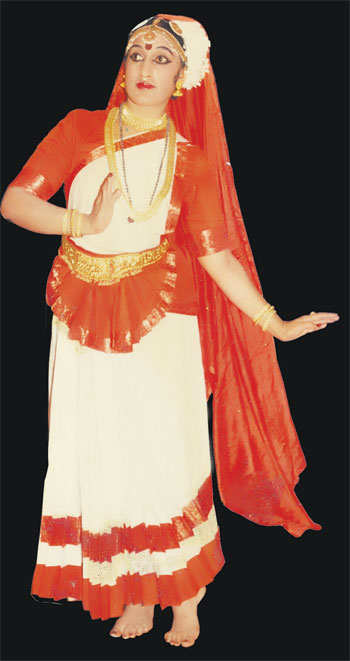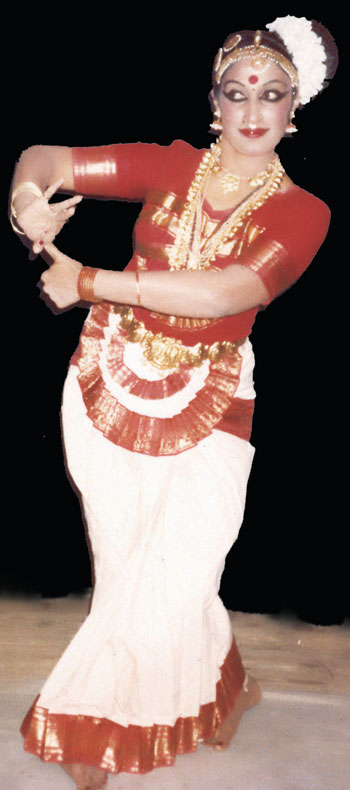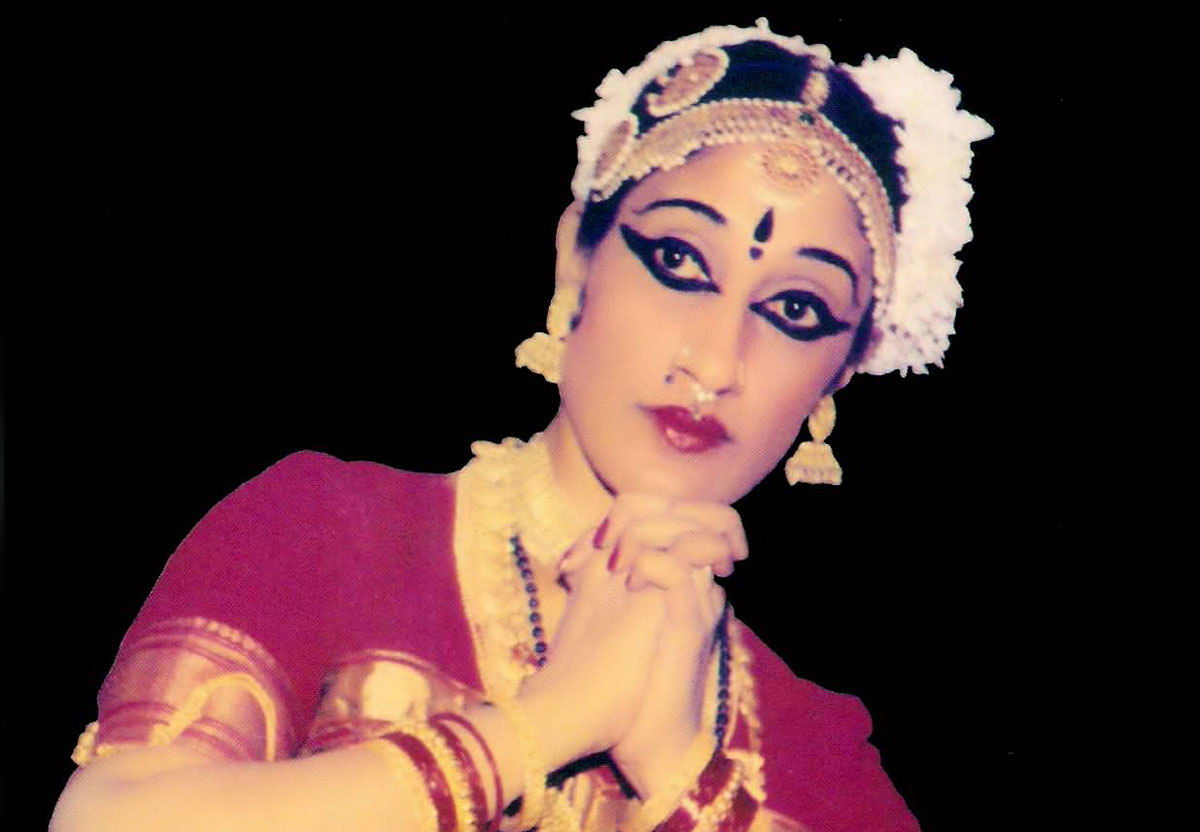Dr. Geeta Radhakrishna : “If There is a Will There is a Way”
Acknowledged as one of the best Mohiniattam exponents of the country, Dr Geeta Radhakrishna is credited having popularised and propagated Mohiniattam on the international platforms with several performances in European and Asian countries. A prolific writer, poetess, scholar, choreographer and teacher, Dr Geeta is the founder-director of Mohiniatta Nritya Kalakshetra and her professional career spans more than four decades. In an exclusive interview with VIJAY SHANKER, Dr Geeta Radhakrishna talks about the dance of the enchantress, her performances abroad and her role as the cultural ambassador of India.
 Is dance your choice or hereditary?
Is dance your choice or hereditary?
I had the natural inclination to dance and started at a tender age. My mother is a fine singer and actress too, so I would say it is hereditary too.
Tell us somthing about your family?
I was born in a middle-class Malayali family. My father was a military officer but a lover of dance and music too. I am the eldest daughter with two brothers and three sisters. I was born in Mumbai and I studied in Kendriya Vidyalaya and later did my B.Sc in Mercy College, Palghat. I was actively associated with cultural activities, was a prize winner too, and quite popular in the college. I also studied Mohiniattam while I was in Kerala from the legendary Kalmandalam Kalyani Kutti Amma and Kalamandalam Satyabhama.
How did you manage to do all this at the same time?
It is all a question of time management, if there is a will, there is a way. When you are passionately interested in something, you will find time to do it.
When did you decide to become a professional dancer?
Initially I never thought of becoming a professional dancer. While I was doing my graduation in Science, I thought I would become a doctor and while I was studying law in Government Law College in Mumbai, I thought I would become a lawyer, but my first trip to the United Kingdom at the invitation of the Government of India, was a turning point in my career. My performance at the Royal Albert Hall was one of the most memorable experiences of my life. It was then that I realized the value and respect that classical dancers get all over the world.
When did you decide to devote your time to Mohiniattam?
After performing in Mumbais at the start of my career, I realized that there were very few Mohiniattam dancers and Mohiniattam was not so popular. On the advice of mridangam maestro and dance critic S.Santhanam and after reading an article on Mohinattam by R Gopalakrishnan in The Illustrated Weekly of India featuring me as a Mohiniattam dancer, I decided to take up the challenge to popularize Mohiniattam on national and international platforms.
Did you face any difficulty in popularizing Mohiniattam?
Yes. It was not easy as most people were not even aware of Mohiniattam. In 1930, Mahakavi Vallathol established Kerala Kalamandalam in Cheruthuruthy in Kerala and introduced Mohiniattam along with Kathakali, when there were only a handful of students. We were taught few items which included the traditional Cholkettu. Firstly, I decided it to be a must to increase the repertoire, and along with the compositions of Maharaja Swati Thirunal, compositions of poet Irayimman Thampi were also used.
How did it go from here?
In order to expand the thematic content, I have choreographed Narayaneeyam (Sanskrit classic), written by Narayana Bhattripad, Swmiye Saranam Ayyappa of Lord Ayappa, Magdalana Mariam, the story of Mary Magdalene whose sins were washed away by Lord Jesus, Kurana, Krishna Leela, Nritta Swara Manjari, a fine combination of music. Melody and rhythm, Maharaja Swati Tirunal, Iryaimman Thampi, Sringara Mohini, Prakriti Nrityam, Ashtapadi attam, Om Namah Shivaya, Devi Mahatmayam, Aaru Padai Veedu and Creation of Universe. To enhance the divine value, I have brought dance closer to human beings. To rise above any particular religion and dance is spiritual in character, and a fine combination of the mind, body and spirit.
Tell us something about your doctoral thesis?
The subject was the classic text Narayaneeyam, pertaining to philosophy, bhakti (devotion) and the aesthetic value. The poet Narayana Bhattripad was suffering from severe rheumatism and was finding it difficult to write and move, but ultimately his steadfast devotion paid off and so by the time he finished writing the entire work, the miracle happenned and he’s completely cured of his illness. Just listening to the verses of Narayaneeyam is itself considered a gratifying and divine experience. Narayaneeyam features the glory and complete life sketch of Lord Krishna.
 Can you throw some light on the ten books you’ve written?
Can you throw some light on the ten books you’ve written?
Besides establishing Mohiniatta Nritya Kalakshetra to teach young aspirants Mohiniattam, it was essential to write books on Mohiniattam. Wherever I perform Mohiniattam, it is essential for me to explain what is Mohiniattam, in order to take a step further. My first book was on Mohiniattam Adavus. Adavus are the dance units or steps. Just like any language, where you have to learn the alphabets, words, sentences and then combine them together, similarly in dance, the first is the steps, the technique of movements and then execution which is elaborately illustrated in the book. It’s useful for students and dancers although you can’t learn just by going through the book, but have a teacher who will teach you the right method of learning, pertaining to varied movements which combined together becomes a beautiful dance called Mohiniattam, the dance of the enchantress,.Mystic poet Jayadeva’s Geet Govind, Prakriti Nrtyam, Meditation and Ahimsa, Devi Mahatmayam, Natana Natesa, Ananda Shiva Natanam and the latest book on Mahatma Gandhi will be released shortly.
Tell us about your performances abroad?
Since the devotion or the bhakti element is most important in presentation, I get an amazing response wherever I perform. When I performed Mary Magdalene, newspapers carried the news “Geeta Moves Moscow to Tears” According to the Bible, Mary repents for her sins, and as she cries at the feet of the Lord, her sins are washed away. People are about to throw stones at her, but when they are asked, that the person who has not committed any sin throw the first stone, then everybody feels ashamed.
Anybody else in your family who will take up your art forward?
My daughter Radhika dances and my younger brother is also a talented Kuchipudi dancer
Any message for our readers?
Spread love among everyone for that will bring peace and prosperity in the entire universe.


